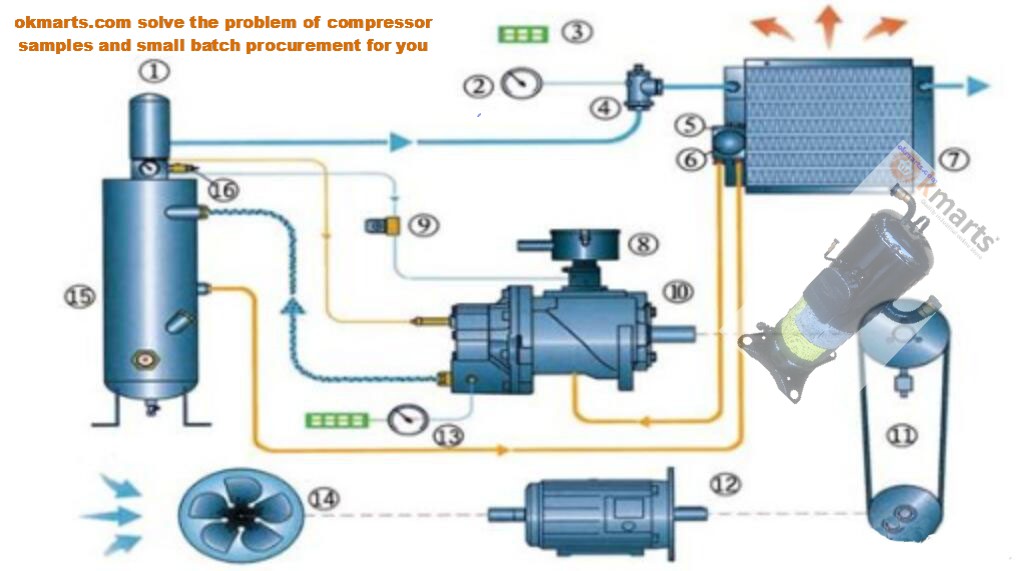Working principle of air compressor An air compressor (air compressor) is a device used to compress gas. The structure of air compressor and water pump is similar. Most air compressors are reciprocating piston type, rotating blades or rotating screws. Centrifugal compressors are very large applications.

1. Inhalation process The intake port on the intake side of the screw must be designed so that the compression chamber can fully inhale, and the screw compressor has no intake and exhaust valve group, and the intake air is adjusted only by the opening and closing of a regulating valve. When the rotor rotates, the groove space of the main and auxiliary rotors is the largest when it turns to the opening of the intake end wall. At this time, the space of the rotor groove communicates with the free air of the intake port, because the air of the groove during exhaust After being exhausted completely, the tooth groove is in a vacuum state at the end of the exhaust. When it is turned to the air inlet, outside air is sucked in and flows into the tooth groove of the main and auxiliary rotors in the axial direction. When the air fills the entire tooth groove, the air intake side end of the rotor turns away from the air inlet of the casing, and the air between the tooth grooves is closed. The above is the air intake process. 2. Closing and conveying process At the end of suction, the main and auxiliary rotor tooth peaks will be sealed with the casing. At this time, the air in the tooth groove is no longer outflow, that is, [sealing process]. The two rotors continue to rotate, and their tooth peaks and tooth grooves coincide at the suction end, and the anastomotic surface gradually moves to the exhaust end, which is [transport process]. 3. Compression and injection process During the conveying process, the meshing surface gradually moves toward the exhaust end, that is, the tooth groove between the meshing surface and the exhaust port gradually decreases, the gas in the tooth groove is gradually compressed, and the pressure increases, which is [compression process]. While compressing, the lubricating oil is also injected into the compression chamber and mixed with the chamber gas due to the pressure difference. 4. Exhaust process When the meshing end face of the rotor turns to communicate with the exhaust of the casing, (at this time, the pressure of the compressed gas is highest) the compressed gas begins to be discharged until the meshing surface of the tooth peak and the tooth groove moves to the exhaust end face, and the two rotors The tooth groove space between the meshing surface and the casing exhaust port is zero, that is, the completion (exhaust process), at the same time, the length of the tooth groove between the rotor meshing surface and the chassis intake port reaches the longest, and the suction process Again.


